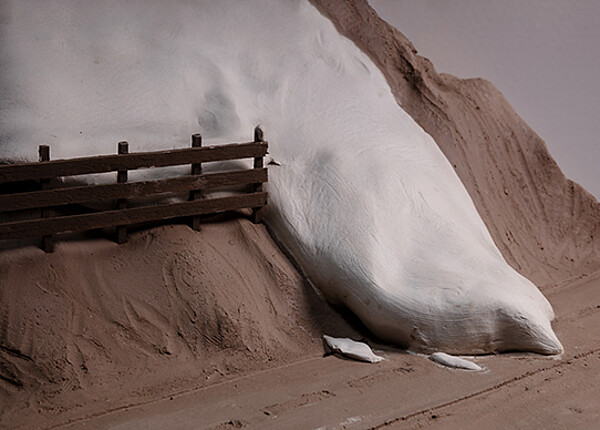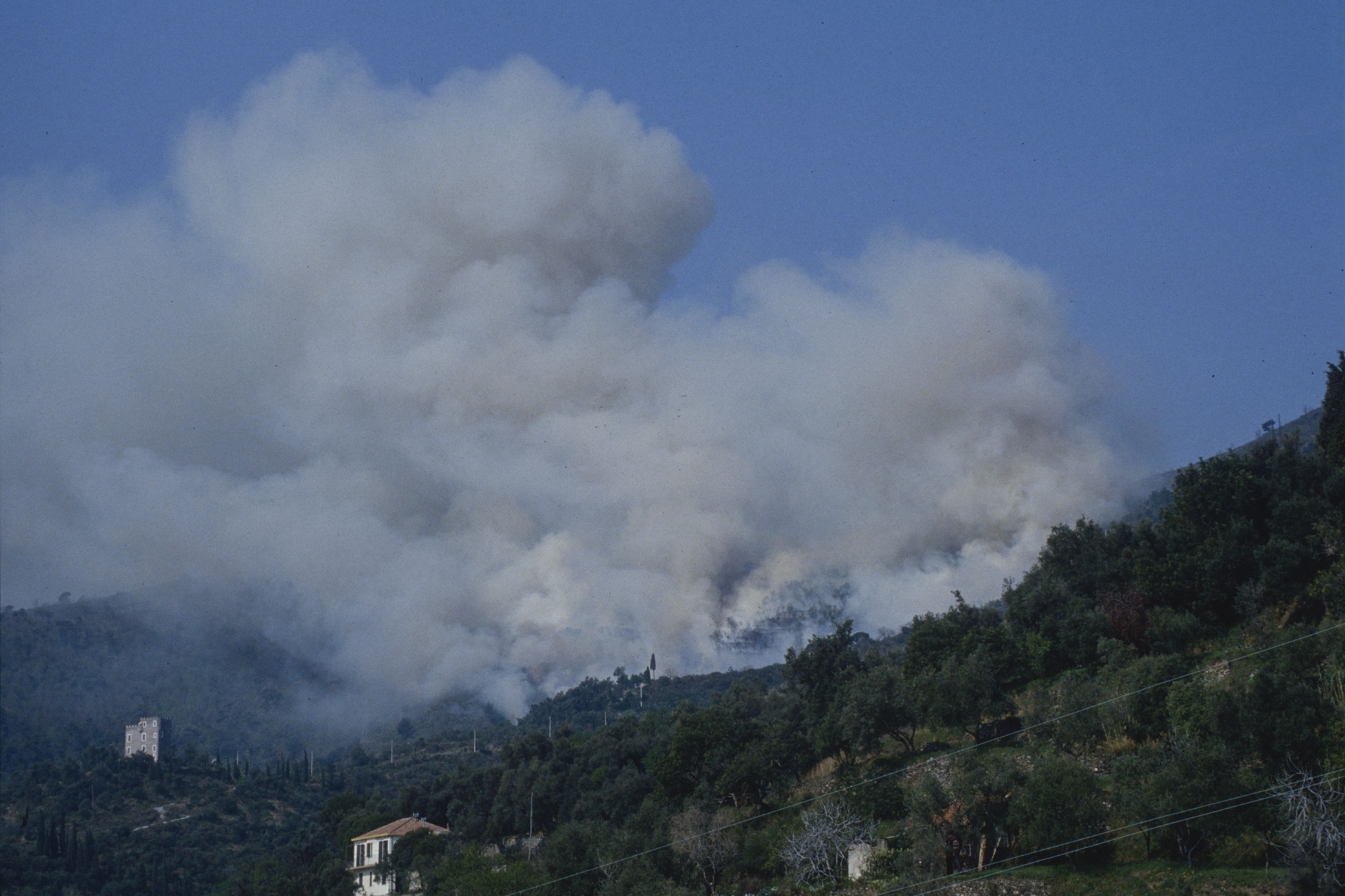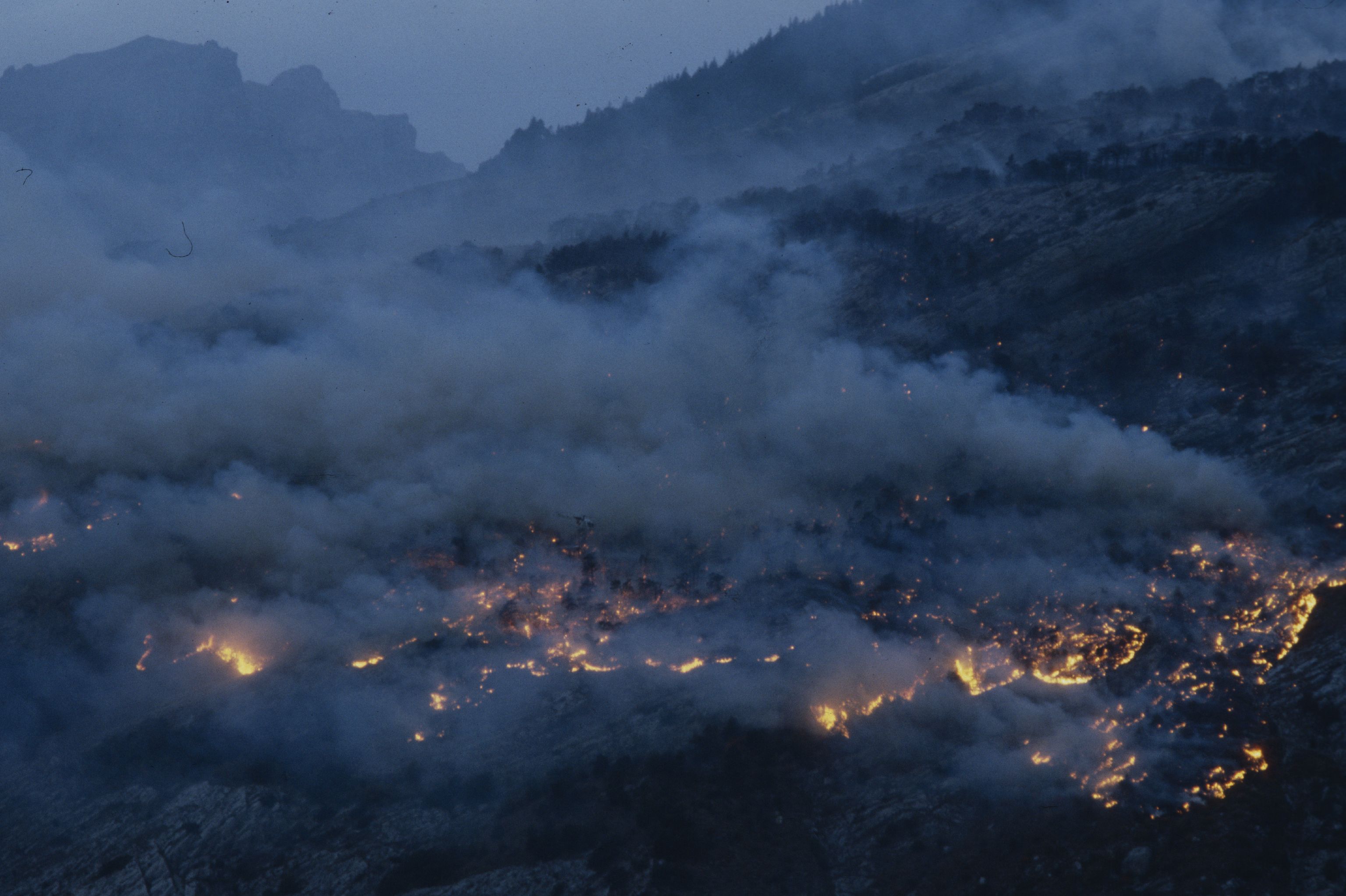Forest fires are defined as uncontrolled fires in forests, which are mostly caused by humans. The southern side of the Alps has been more severely affected by forest fires in the past, although the risk of forest fires has also increased in the rest of Switzerland in recent years. As a result of climate change, more frequent periods of heat and drought are expected throughout Switzerland in the future, which will further increase the risk of forest fires.
Forest fires can endanger people and animals and destroy buildings, infrastructure and cultural assets. In Switzerland, however, they are more often a threat to the protective function of the forest. When forest fires destroy protective forests, entire villages or roads are sometimes no longer safe. Large fires can lead to further natural hazards, impair the utilisation and services of the forest and change the landscape.
Systematic recording
Warnings and systematic recording
In cooperation with the cantons, the federal government warns the authorities and the population of forest fires. All forest fires in Switzerland have been systematically recorded since 2008. On behalf of the Federal Office for the Environment (FOEN), the Swiss Federal Institute for Forest, Snow and Landscape Research (WSL) maintains a forest fire database with over 10,000 incidents to date.
Effective measures
Effective measures
The federal government makes personal recommendations on how individuals should behave before, during and after a forest fire. The cantons on the northern side of the Alps benefit from the experience of the southern cantons and are preparing for an increasing risk of forest fires. In particular, good co-operation between the forestry services and the fire brigades is important. Examples of measures include
The cantons are developing strategies for dealing with forest fires
Due to the higher risk of forest fires on the southern side of the Alps, the canton of Ticino (German) and canton of Valais (German) have had effective forest fire management systems in place for many years. However, the cantons north of the Alps have also been pushing ahead with the development of forest fire concepts and strategies in recent years, for example Bern (German), Lucerne (German) and Solothurn (German). In addition to prevention and firefighting, these plans focus on the post-fire phase, during which the fire is analyzed, and the forest is restored. On national levels, forest fire prevention was strengthened in 2022 with the introduction of the first forest fire information system (German). Thanks to this system, forest fire risks are assessed in cooperation between the federal government and the cantons based on five risk levels and updated daily.
Cascade of natural hazards

Falling processes
Burnt-down protective forests can no longer stop rockfalls.

Landslides
A lack of protective forests can lead to unstable slopes, which is why landslides often occur after forest fires.

Avalanches
Depending on how it develops, a burnt forest can lose its protective function after a few years.







